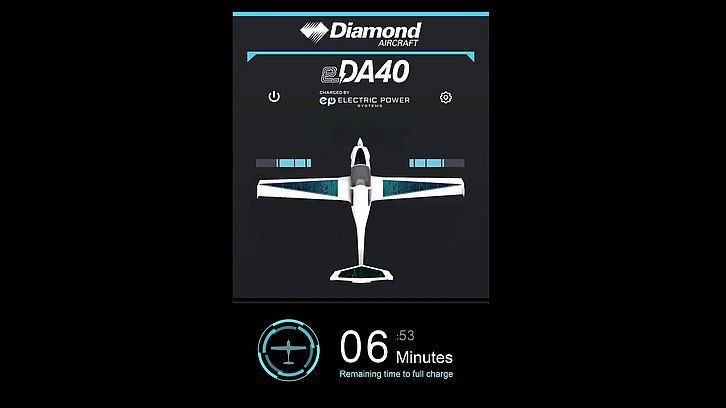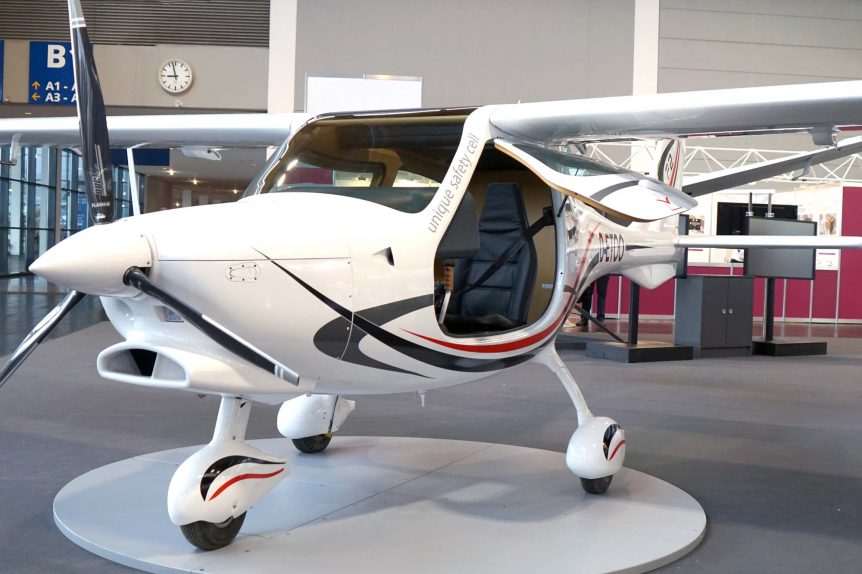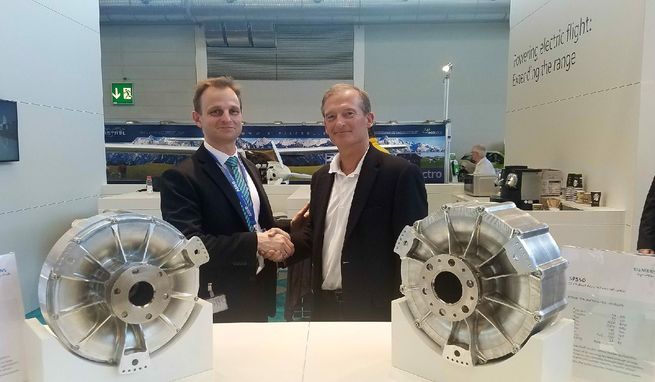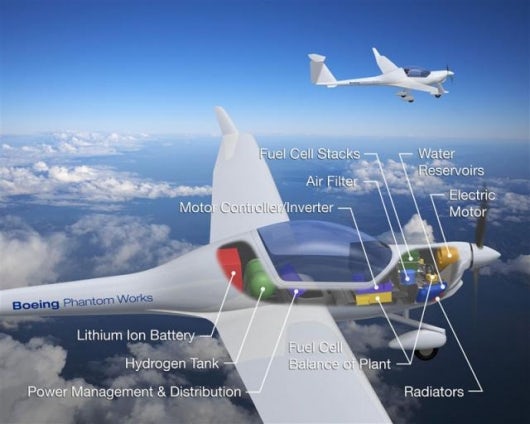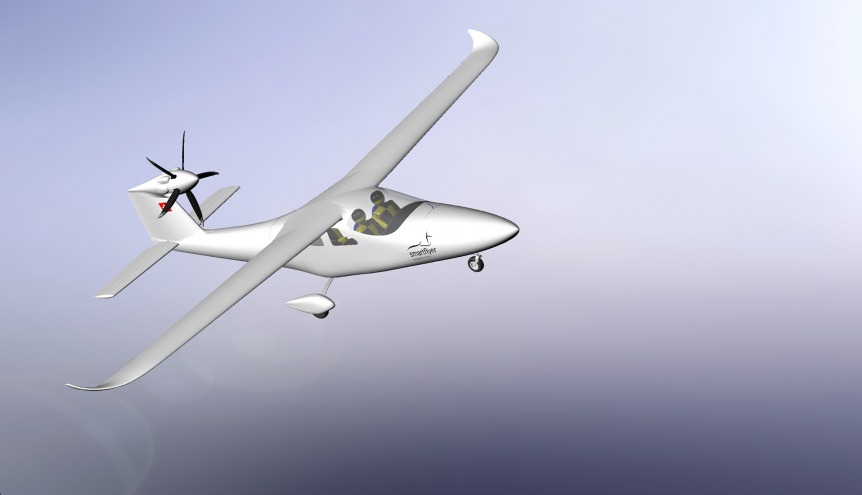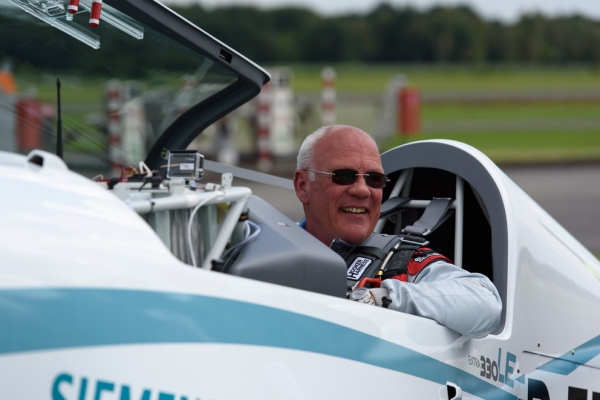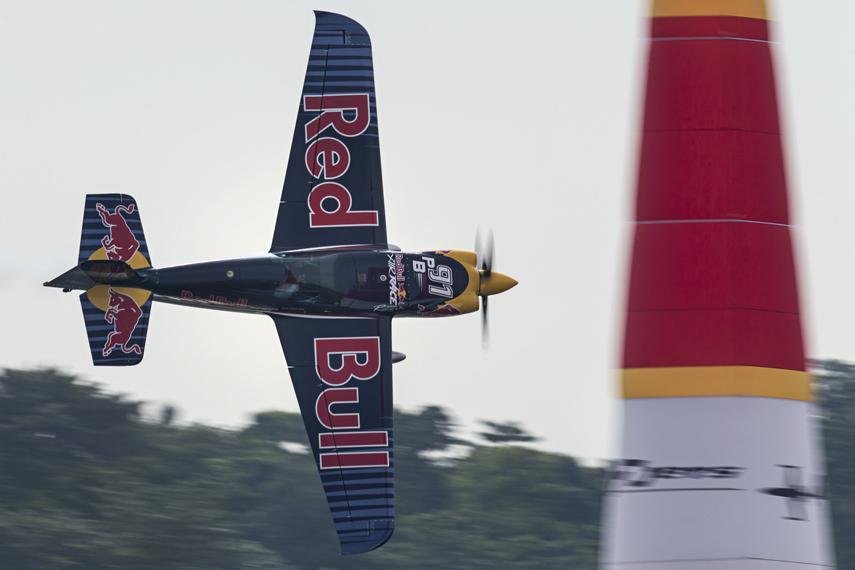Austria’s Diamond Aircraft launched its eDA40 last year, headed toward becoming “The first EASA/FAA (European Aviation Safety Agency/Federal Aviation Agency) Part 23 certified electric airplane with DC fast charging. Electric Power Systems’ DC fast charging system is capable of turning around a depleted aircraft in under 20 minutes.” Austria’s Diamond Aircraft has been developing environmentally responsible aircraft for the last several decades, starting with the hydrogen fuel cell-powered HK-36 in 2008. Diamond promoted its work with Boeing Phantom Works as emitting nothing more than waste heat and water vapor, demonstrating “technology that may result in cleaner APU’s (auxiliary Power Units) for commercial aircraft of the future.” Diamond went beyond that over the next decade, using the HK-36 as a testbed for various hybrid and electric power variants. In 2018, things had evolved to the HEMEP (Hybrid Electric Multi Engine Flying), a serial hybrid with two Siemens (now Rolls-Royce) motors on nose-mounted stalks powered by an internal combustion engine in the …
Bigger, Better, and Electric – Flight Design F2e
Electric Flight.eu reports on the new Flight Design F2e, a two-seater and first of an expanding range of aircraft that might even include hydrogen-powered craft. The smaller Flight Design CT has been flying for over 18 years, and over 2,000 have been sold, but typical of the small aircraft industry, Flight Design has been assimilated under a larger entity, Lift Air. Working with Siemens for the new craft’s motor and APUS* for assistance with design and certification, Flight Design has created a light sport aircraft that provides safety, comfort and good performance on either gasoline or electric power. While the gasoline-powered version will probably be held to LSA weights, the electric model will have a reported maximum weight of 1,100 kilograms (2,420 pounds). This comes from a probably substantial airframe that can be modified to carry four passengers, or batteries that will allow a promised two-to-three-hour endurance. (Even though this was reported in two sources, your editor has qualms about …
Big Events and Numbers for Bye Aerospace
Bye Aerospace has four big current projects, with the Sunflyer 2 at the top of the development and sales curve. Teaming with Siemens, Bye Aerospace is now flying Sunflyer 2 with one of their 57 pound SP70D motors producing a 90 kilowatt peak rating (120 HP), and continuous power up to 70kW (94 HP). Bye anticipates that Sunflyer 2 will be, “the first FAA-certified, practical, all-electric airplane to serve the flight training and general aviation markets.” George Bye, the company’s founder and CEO has been working with Agency for several years on devising rules for electric aircraft certification. The need for 790,000 new pilots in the next few decades will drive the need for training aircraft. An aging fleet with an average age of 48 years for the Pipers and Cessnas on flight school tarmacs requires a newer, more modern series of training planes to replace them. Sunflyer’s impressive sales numbers (a recent order from the Aspen Flying Club for …
Mike Friend Talks Hybrids in Beijing
Mike Friend spent 36 years with Boeing, rising to positions as Chief Engineer and Technology Director. His technical and linguistics abilities helped make him a world traveler, creating the first fuel-cell powered airplane in Spain, for instance, in 2002 through 2008, when the demonstrator craft first flew. That was the first of many hybrid designs Mike would work on, with samples of his work on display this month in Beijing. At the E-Flight Forum, sponsored by Siemens, he held forth on single-, two-, and five-seat configurations that could benefit from hybrid power. His talk, “Hybrid electric aircraft concepts, and a rational approach to success,” explained his reasoning for being enthusiastic about hybrids and showed different ways hybrid technology could be applied to different missions. He points out that even though batteries have gone past the “tipping point” for practicality, they are heavy. What is not of concern on a bus is a major problem in a light airplane. (The talk …
SmartFlyer Challenge: Electric Airplanes Fill Swiss Skies
There are few times one will see more than one electric airplane at the same place – outside of perhaps, Friedrichshafen’s e-Flight Expo every year. But to see them flying at the same field on the same day is an even grander delight. That happened September 9 and 10 at Grenchen, Switzerland. Grenchen hosted the world’s first all-electric fly-in – the SmartFlyer Challenge. It drew an appreciable number of electric aircraft of all sizes and types despite the clouds and rain that kept some from scaling the mountains. An Electric Three-Plane Formation Flight The Siemens-powered Magnus e-Fusion from the Czech Republic, the electric Phoenix motorglider, and Stuttgart University’s e-Genius all flew formation with a Piper L-4, a World War Two liaison aircraft and camera plane. They joined a commendable group of aircraft on the field. All seemed to fly as much as possible during the event, including drag racing a Tesla S sedan down the runway. Expatica.com noted, “Pilot Frank …
Siemens-Powered Extra 330LE Makes a Great Tow Plane
Already proving its ability to climb at a great rate on its own, the Siemens-powered Extra 330LE towed an LS-8 sailplane to 600 meters (1.968 feet) in a mere 76 seconds. This alone could be a gift to soaring. Sitting at the controls of a sailplane being towed aloft behind a conventionally-powered tow plane proves taxing, for the many minutes it takes to gain a release height of 2,000 or 3,000 feet can seem somewhat endless. It’s also expensive for the gliding club or commercial operation. The soaring club in which your editor was a member calculated the average tow for a Piper Pawnee or Cessna AgWagon consumed around 2.7 gallons to 3.0 gallons of $5.00 a gallon avgas. Twenty or thirty tows a day make for significant operational costs. It’s also the most dangerous part of the flight. A wrong move by a student (or experienced pilot) on tow can put two airplanes and their occupants into the dirt. …
Siemens 260 kW Motor First Flight, and a Siemens at the 2016 SAS
Siemens Motors announced the first public flight of their SP260D motor in an Extra 330LE aerobatic aircraft – although the motor had made its maiden, but not so public, flight on June 24. Putting out 260 kilowatts (348.5 horsepower) in near silence according to Siemens, the motor will certainly be capable of putting the Extra through its paces. The motor weighs only 50 kilograms (110 pounds), and with its Siemens inverter adds little weight to the nose of the Extra. Pipistrel-designed battery packs grouped behind it push the power-pack weight toward the center of gravity, which should enhance handling qualities. As Electronics Weekly reports, “Support structures have been on a finite element analysis diet. The aluminum ‘end shield’, for example, which supports the motor end bearing and takes all the propeller forces, went from 10.5 (23.1 pounds) to 4.9kg 10.8 pounds) .” This presentation shows the process on page 12. A finite element analysis program, NX Nastran, removed bits that …
Hungary Scores an Electric First
Thanks to Richard Glassock, we have news of the first electric airplane to fly in Hungary. The Magnus eFusion made its maiden flight at the Matkópuszta airfield in Kecskemet, Hungary on April 11. A two-seat, side-by-side, low-wing monoplane, eFusion is an all-composite craft with fixed tricycle gear. Its 410 kilogram empty weight includes batteries and a ballistic recovery system. With a maximum takeoff weight of 600 kilograms, the airplane normally flies with a Rotax 912 or UL Power 260 iSA, both four-cylinder, four-stroke units meant for the Light Sport Aircraft market. A fusion of the Corvus Racer 540, a high performance aerobatic aircraft flown in the Red Bull Air Races and the Corvus Phantom, a Light Sport Aircraft, the Magnus Fusion series of aircraft sport a symmetrical, fully-aerobatic wing (6+/3- G, not the 10G wing of the racer), a titanium firewall, chromoly tube center section (described as an “integrated chrome molybdenum central console”) and ballistic aircraft retrieval parachute. The airplane …
Diamond’s Hybrid-Electric Tiltrotor
Diamond Aircraft of Austria gave Flying magazine news of its hybrid-electric tiltrotor project – something not announced on Diamond’s own web site. According to Flying, Diamond will partner with an unnamed “major industrial partner.” The airplane could become certified within seven years, enabling customers to own a six-passenger vertical takeoff and landing vehicle with ostensibly high speed and the ability to set down virtually anywhere. Diamond founder and CEO Christian Dries says the craft will be powered by two high-output Siemens electric motors with power to recharge the batteries in flight supplied by a pair of Austro diesel engines. Since there are four propellers, the motors’ outputs would probably be split fore and aft to a pair of rotors. The unnamed concept would have a maximum takeoff weight of 6,600 pounds. To test the concept, Diamond will build a 725-pound unpiloted prototype starting next month. That will be followed by a 2,800-pound prototype, with the full, fly-by-wire production version coming …
Electric Cri-Cri Crosses English Channel
Michael Coates, the U. S. General Distributor for Pipistrel Aircraft, sent the following missive from Ivo Boscarol, General Manager and Founder of the Slovenian company, now in its 26th year. “Dear All, “It is my pleasure to inform you that our friend Hugues Duval after reading the information that Pipistrel was blocked in flying across the English Channel today became the first electric aircraft to cross the English Channel in his CRI-CRI E-Cristaline Electric aircraft. “As Duval already had the permanent permit to fly his aircraft there was no need to ask for a permit to fly over the English Channel, but only to fill the flight plan. It was possible to keep the flight information secret up to the end. “From the available information that we have, shortly after the flight announcement, an order was issued to stop him but he did not respect it and he successfully crossed the channel this evening, 9. July 2015 in the first flight …
- Page 1 of 2
- 1
- 2

